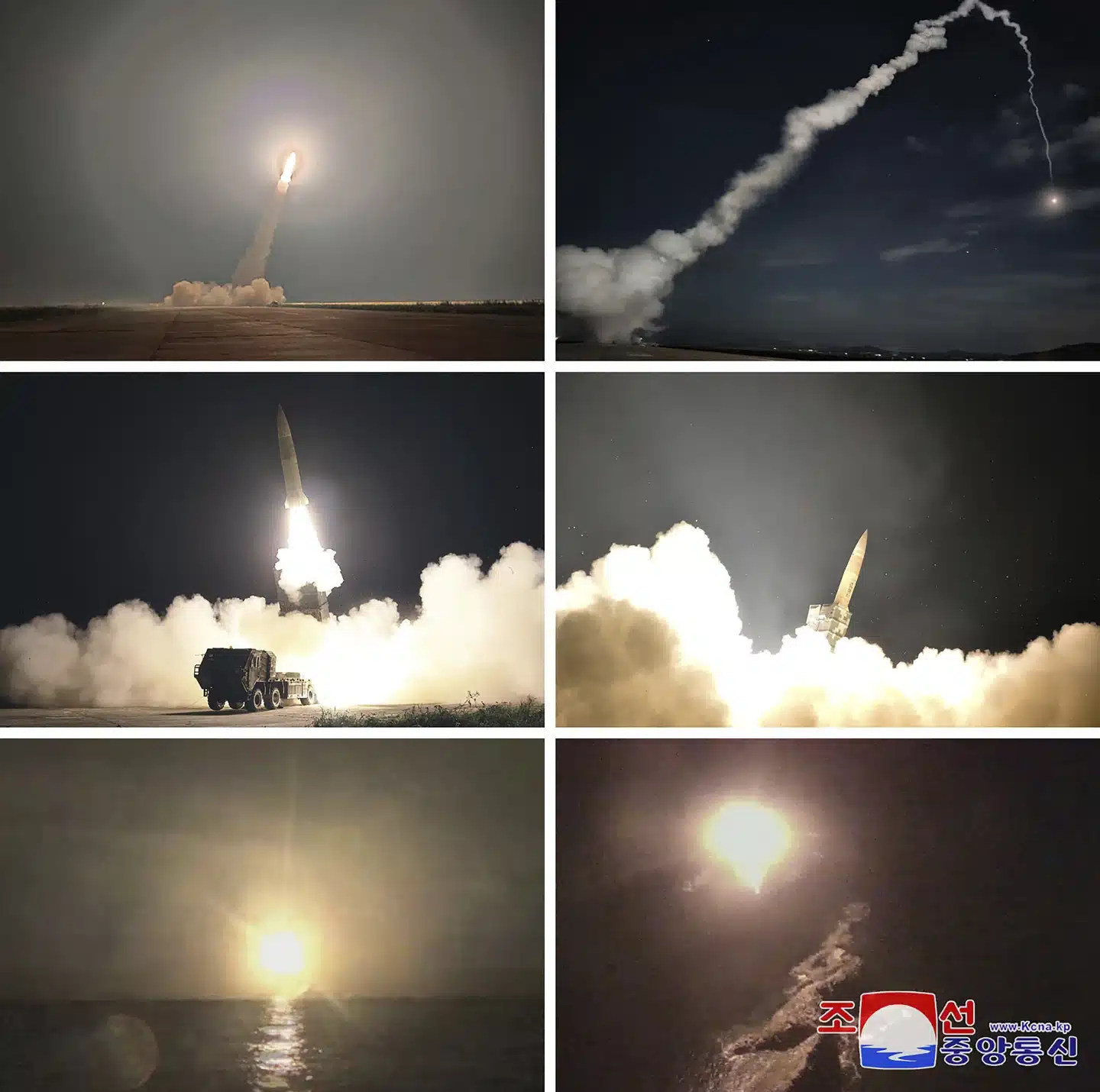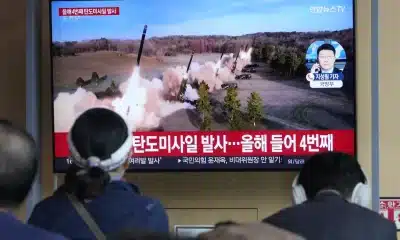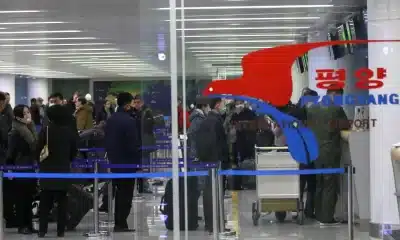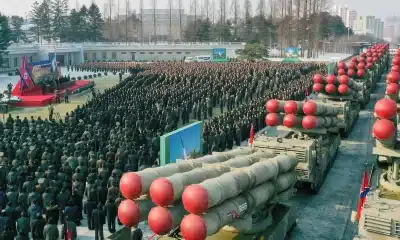News
North Korea Says It Simulated Nuclear Attacks On South Korea And Rehearsed Occupation Of Its Rival

South Korea’s SEOUL — North Korea said Thursday that its recent missile launches mimicked “scorched earth” nuclear strikes on South Korea and that it has also been practicing occupying its rival’s territory in the case of war.
Pyongyang has already tested nuclear-capable missiles and indicated how they would be used in hypothetical conflicts with South Korea and the United States. However, according to observers, the North’s disclosure of specific war plans underlined its aggressive nuclear strategy to terrify its opponents, as it escalated its protest of the continuing South Korean-US military drills, which it sees as a huge security threat.
According to the official Korean Central News Agency, North Korea’s military fired two tactical ballistic missiles from the capital on Wednesday night to practice “scorched earth strikes” on major command centers and operational airfields in South Korea.
The North Korean military claimed that the missiles carried out their simulated hits via air bursts, implying that it validated the explosions of dummy warheads at a predetermined altitude.
North Korea claimed its missile tests were in response to the US flying long-range B-1B bombers over South Korea earlier Wednesday as part of the partners’ field drills.
South Korea’s SEOUL — North Korea said Thursday that its recent missile launches mimicked “scorched earth” nuclear strikes on South Korea.
“(The aerial drill) poses a serious threat to (North Korea) because it was conducted in accordance with the scenario for a preemptive nuclear strike against” North Korea, according to the Korean People’s Army general staff. “The KPA will never forget the reckless actions of US forces and (South Korean) military gangsters.”
The Wednesday missile launches were the most recent in the North’s onslaught of weapons testing since last year.
According to estimates from South Korea and Japan, the two short-range missiles flew 360-400 kilometers (225-250 miles) at a maximum height of 50 kilometers (30 miles) before landing in the waters between the Korean Peninsula and Japan.
South Korea’s Joint Chiefs of Staff described the launches as “a grave provocation” that endangers international peace and breaches United Nations Security Council resolutions prohibiting North Korean ballistic missile launches. The US Indo-Pacific Command stated that the US commitment to South Korean and Japanese defense remained “ironclad.”
On Wednesday, South Korean and Japanese authorities reported their jets engaged in joint aerial exercises with US B-1B bombers. According to South Korea’s Defence Ministry, Wednesday’s B-1B deployment is the tenth flypast by US bombers over the Korean Peninsula this year.
North Korea is highly concerned with deploying US B-1B bombers capable of carrying many conventional bombs. The North describes the bombers as “nuclear strategic” even though they were converted to conventional weapons in the 1990s.
South Korea’s SEOUL — North Korea said Thursday that its recent missile launches mimicked “scorched earth” nuclear strikes on South Korea.
The United States and South Korea began their summer Ulchi Freedom Shield computer-simulated command post exercise on August 21. This year’s training, which is set to culminate later Thursday, has featured more than 30 field exercises, such as Wednesday’s combined aerial exercise with the B-1B aircraft.
North Korea describes significant US-led military exercises on and around the Korean Peninsula as preparation for an invasion. Officials in both Washington and Seoul argue that their exercises are defensive. The United States has approximately 28,000 troops stationed in South Korea.
According to KCNA, Kim visited an army base on Tuesday where his troops have been undertaking command post maneuvers in reaction to the South Korean-US military training. The drills are intended to practice procedures for “occupying the entire territory of the southern half” of the Korean Peninsula in the event of a conflict, according to the statement.
Kim emphasized the importance of “dealing a heavy blow at the enemy’s war potential and war command centre, as well as blinding their means of command communication at the initial stage of operation.” According to KNCA, Kim also specified requirements for acquiring the ability to launch “simultaneous super-intense strikes” at important enemy military objectives and other places whose destruction can bring social and economic upheaval.
According to researcher Cheong Seong-Chang of South Korea’s private Sejong Institute, the North’s study shows it has operational plans to launch full-fledged attacks on South Korea during armed hostilities between the rivals to achieve Korean unification by force. He claimed North Korea was planning nuclear and EMP (electromagnetic pulse) attacks early in the war.
South Korea’s SEOUL — North Korea said Thursday that its recent missile launches mimicked “scorched earth” nuclear strikes on South Korea.
Later Thursday, South Korea’s Unification Ministry harshly condemned North Korea for publicly declaring its intention to invade the South. It warned North Korea that if it maintains its provocations and military threats, it will face “an overwhelming response” from South Korea, the United States, and Japan.
According to the ministry, it was the first report on command post training involving the whole military since Kim took office in late 2011.
Since last year, when it passed new legislation authorizing nuclear weapons in various situations, North Korea has openly threatened to deploy its nuclear weapons first in prospective battles with South Korea and the United States.
Kim has been working hard to grow and modernize his arsenal of weaponry. Its second effort to launch a spy satellite failed last week, but a third attempt is planned for October.
Foreign experts believe Kim will eventually utilize his expanded military arsenals to push the US to make concessions when negotiation restarts.
SOURCE – (AP)









































